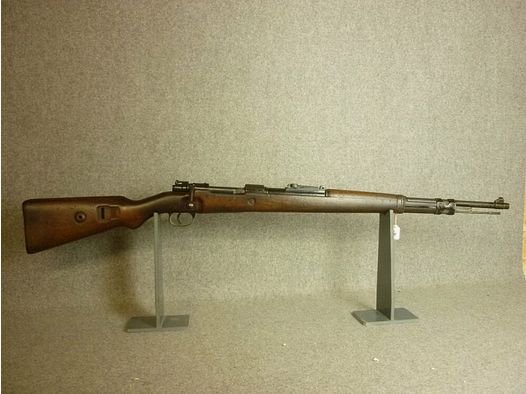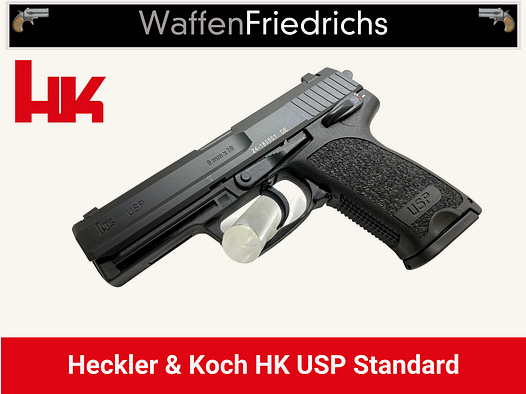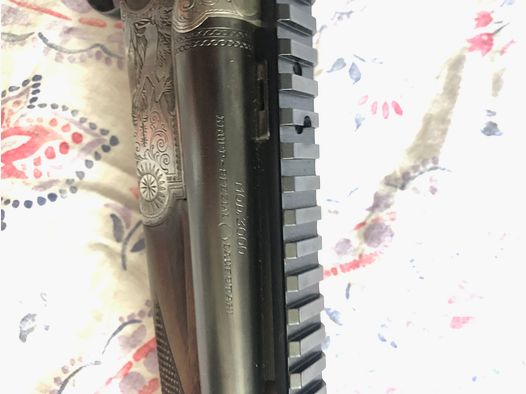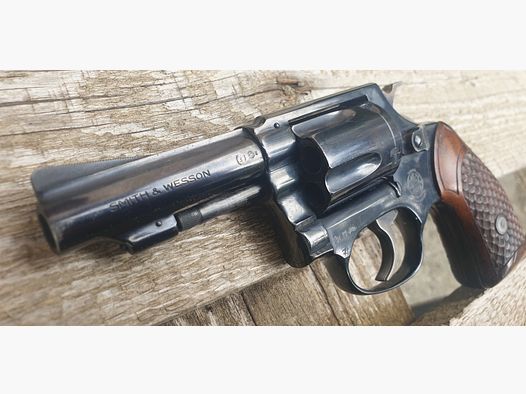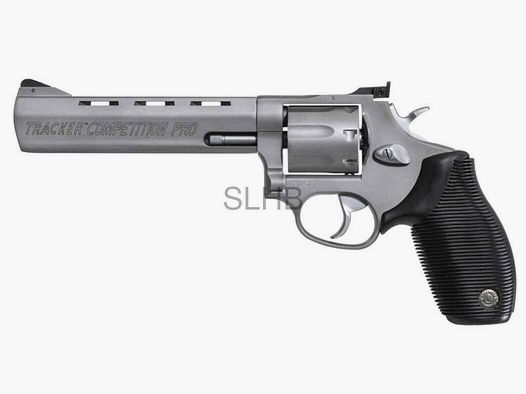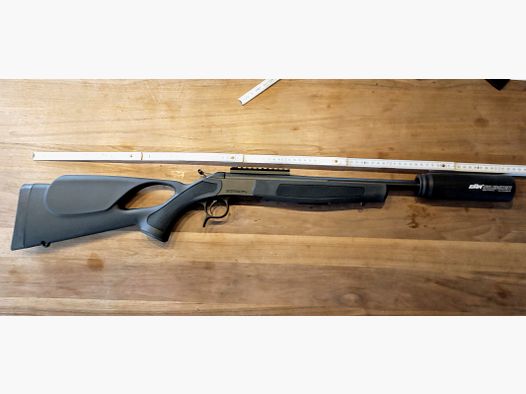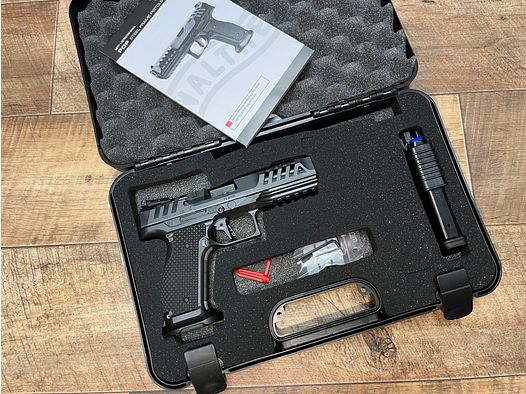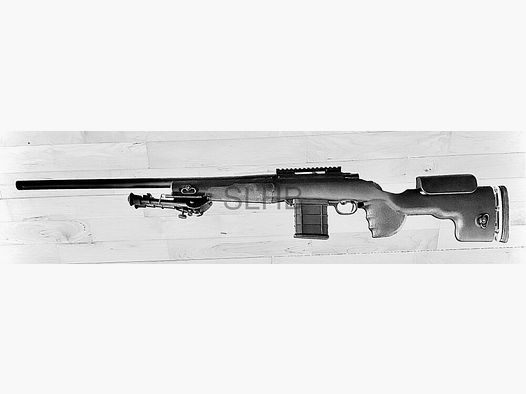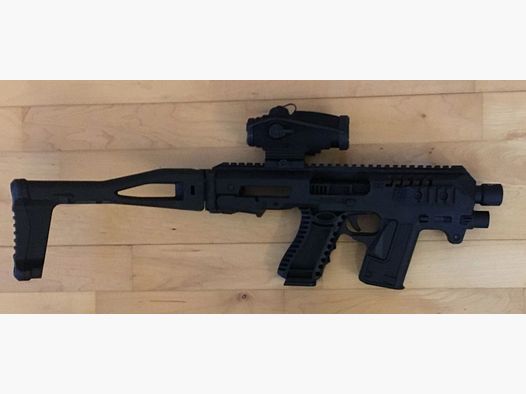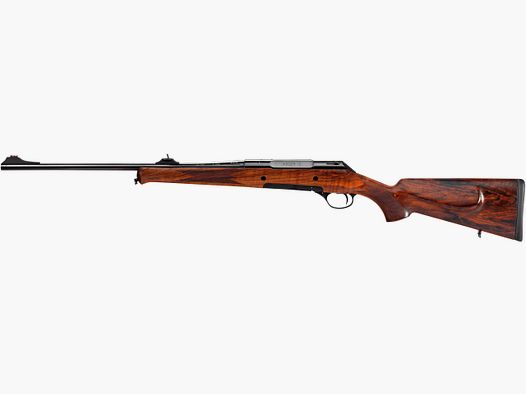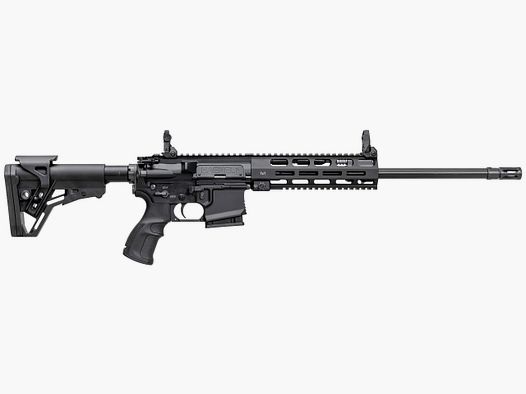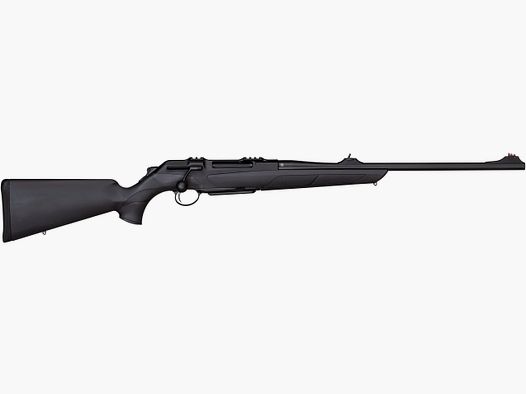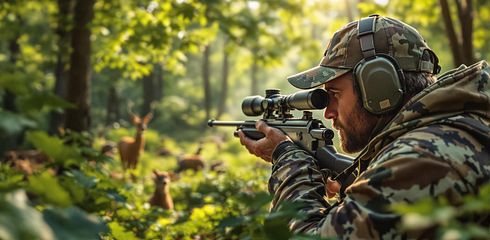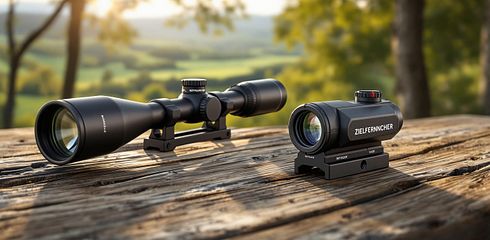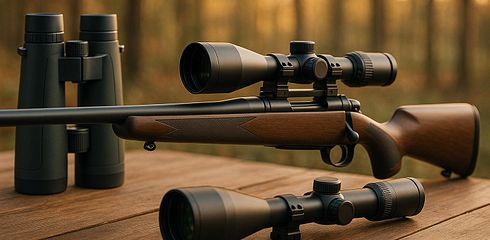The choice of the right sighting optic depends on your intended use. Red Dot Sights and standard optics differ in five key areas: target acquisition, range, precision, user-friendliness, and application possibilities.
- Red Dot Sights: Perfect for short to medium distances (up to about 200 meters). They are fast, easy to use, and offer a wide field of view. Ideal for dynamic situations such as driven hunts or shooting sports. Battery-dependent, but robust and weatherproof.
- Standard Optics: Excellent for long-range shots (over 200 meters). With magnification and fine reticles, they are precise and versatile. They are mechanical, low-maintenance, and particularly suitable for stand hunting or competitions.
Quick Comparison:
| Criterion | Red Dot Sights | Standard Optics |
|---|---|---|
| Target Acquisition | Fast, both eyes open | Slower, more precise |
| Effective Range | Up to about 200 meters | Over 200 meters |
| Field of View | Wide field of view | Restricted |
| Long Range Precision | Limited accuracy | Very precise |
| Battery Dependency | Yes | No |
Conclusion: Red Dot Sights are ideal for quick, intuitive shots at short distances. Standard optics offer maximum precision at long ranges. Choose according to your requirements and application area.
The Best Optic for Driven Hunts
Red Dot Sights: Function and Advantages
Red Dot Sights have fundamentally changed aiming with their advanced technology. They project a lit red dot as a target marker, and the heart of these optics is a specially coated mirror reflector. This reflects only the red light from an LED, creating the characteristic aiming point. Compared to traditional scopes, Red Dot Sights provide a non-magnified view of the target, resembling a heads-up display as seen in fighter jets. The result? A clear overview and faster target acquisition.
Fast Target Acquisition Thanks to Parallax-Free Design
A key advantage of Red Dot Sights is their nearly parallax-free design. This means that the red dot remains aligned with the target regardless of your eye position behind the optic. Parallax, or the apparent shift of an object at different viewing angles, is minimized. This significantly improves precision.
"Operationally parallax-free optics allow the shooter to achieve accurate hits on the target without requiring a consistent shooting position on the rifle." – Duane "Buck" Buckner, US Training Director of Aimpoint
You can easily test the parallax-free feature: Aim the optic at a distant target and move your head. If the dot remains stable, it is a nearly parallax-free optic. Perfect parallax-free performance is technically only achieved at infinite distances. At shorter ranges, the error margin depends on the diameter of the collimator optic. Some manufacturers offer models specifically tuned for finite distances. However, in addition to this precise target acquisition, there are other advantages that Red Dot Sights offer.
Main Features of Red Dot Sights
Red Dot Sights excel not only in precision but also in speed. The direct target acquisition and non-magnified field of view allow you to react faster in dynamic situations. Thanks to the open design, you can keep both eyes open, significantly improving your situational awareness.
Another advantage is adaptability to different lighting conditions. With adjustable brightness modes, the red dot remains visible in both bright daylight and low light. The size of the reticle typically varies between 0.6 and 1.6 mrad (about 2 to 5 MOA).
Modern Red Dot Sights also impress with their robustness. They are shockproof, waterproof, and fog-free, ensuring reliable performance even under demanding conditions. Since Aimpoint developed the first electronic Red Dot Sight with LED and reflective mirror in 1975, these optics have been continuously improved – including energy-saving LEDs and energy-efficient electronics. Their versatility makes them compatible with nearly all weapon platforms, and the intuitive operation appeals to both beginners and experienced shooters.
As John McPhee aptly summarizes:
"The worse your eye, the more a RDS helps with sighting and target acquisition. The faster you achieve that, the faster you can take the shot."
Standard Optics: Features and Strengths
Standard optics, such as riflescopes, are the first choice when it comes to precise shooting at long distances. Their high magnification and precise reticles make them ideal for long-range shots, stand hunting, or competition situations.
In contrast to Red Dot Sights, which are more suited for short to medium distances, riflescopes offer a wide range of applications. They can be used both at close range and at long distances. Thanks to their variable magnification, they can be flexibly adapted to different scenarios.
Magnification and Reticle Types
The magnification is the heart of a riflescope. For long-range shots that can reach up to 1,000 meters, magnifications in the range of 15× to 30× are common. Additionally, objectives with a diameter of at least 50 mm ensure bright and clear images even in poor lighting conditions – a crucial advantage at dusk or in difficult weather conditions.
Modern riflescopes offer a variety of reticle types, including duplex, mil-dot, and BDC reticles (Bullet Drop Compensation). Particularly popular among long-range shooters are first focal plane (FFP) reticles, as they adjust the scaling of the reticle proportionally to the magnification. This allows for a consistent point of aim reference and facilitates distance estimation at the reference magnification. With BDC reticles, shooters can also quickly aim at different distances without having to manually adjust the turrets of the riflescope.
Common Applications for Standard Optics
The versatility and precision of standard optics make them an indispensable tool in numerous application areas. In long-range shooting, they allow for clear target acquisition and precise hits over several hundred meters. At the same time, the magnification helps observe one's own movements and their impact on the weapon – an important step in establishing a stable shooting position.
In stand hunting, these optics are also indispensable. They allow hunters to safely identify game at long distances and take accurate shots. For competitive shooters, they provide the precision required in disciplines such as benchrest or F-Class competitions. MOA reticles are often preferred, as they allow for finer gradations of aiming points.
An interesting development is Low Power Variable Optics (LPVOs), which are suitable for both short and long distances with a magnification range of 1× to 10×. This flexibility makes them particularly attractive for shooters who want to quickly adapt to different situations without having to change their optics.
Accuracy and Performance Comparison
The choice of the right optic strongly depends on the distance and intended use – Red Dot Sights are excellent for short to medium distances, while Standard Optics showcase their strengths in long-range shooting. But how do these systems differ in practice? A precise comparison of their accuracy and handling provides insight.
Red Dot Sights particularly excel at short to medium distances due to their fast target acquisition. A former SWAT specialist reported that he could easily hit a coin from about 50 meters away with a Red Dot Sight on his M4. The system was zeroed at distances of about 23 to 229 meters (converted from 25 to 250 yards). However, the enlarged, illuminated dot can make target acquisition more difficult at around 200 meters.
"Speed, accuracy, and reliability are the three pillars of a successful IPSC performance. The Sightmark Mini Shot M-spec covers all three areas." – Richard van der Wel, IPSC shooter
Standard Optics, on the other hand, are designed for precise shots at greater distances. An AR-15 with 5.56 NATO and a 16-inch barrel, for example, has an effective range of about 460 meters (approximately 500 yards). With special 5.56 loads, this range can even be extended to over 690 meters (approximately 750 yards). Thanks to high magnification and fine reticles, riflescopes deliver impressive precision.
Tests show interesting differences: While Red Dot Sights are minimally slower at short distances (up to about 7 meters) (about 0.25–0.30 seconds), they allow for significantly faster target acquisition from 10 meters onward. In low light conditions, they provide nearly daylight-like visibility through their self-illuminating, adjustable dots – a clear advantage over traditional iron sights, which often reach their limits in such situations.
"When you're shooting in low-light conditions, a red dot will offer you better visibility." – Felix Teper, author, Night Vision Guys Blog
Performance Comparison Table
The main differences between the two optic systems can be summarized as follows:
| Criterion | Red Dot Sights | Standard Optics |
|---|---|---|
| Target Acquisition | Very fast, especially from about 10 meters | Somewhat slower due to magnification |
| Effective Range | Up to about 100 meters, maximum 200 meters | From about 200 meters to over 1000 meters |
| Field of View | Very wide (both eyes open) | Restricted due to magnification |
| Parallax | Parallax-free | Can occur with incorrect settings |
| Low Light | Excellent thanks to self-illuminating dot | Good when illuminated reticles are used |
| Long Range Precision | Limited by dot size | Excellent due to magnification and reticle |
| Battery Dependency | Yes | No (purely mechanical) |
| Weather Resistance | Good (tube styles more robust than open designs) | Very good due to closed construction |
Environmental conditions affect the systems differently: Reflex Red Dots with open construction are more susceptible to dust and rain, while tube designs are more robust due to their closed construction. Standard optics generally offer better protection against external influences.
For most shooters, the effective range of Red Dot Sights is about 100 meters, even though theoretically up to 200 meters is possible. Standard optics, on the other hand, allow even less experienced users to make precise shots at greater distances, as the magnification compensates for smaller aiming errors.
In summary, Red Dot Sights offer clear advantages in fast target acquisition at shorter distances, while Standard Optics are the best choice for precise long-range shots and versatile applications.
User-Friendliness and Handling
The operation and handling of optics play a crucial role in their effectiveness in use. Red Dot Sights impress with their simple and intuitive operation, while Standard Optics score with a robust, purely mechanical design that does not require batteries. Both systems have their advantages and disadvantages, especially regarding daily use.
Field Use and Adjustment
Red Dot Sights can be conveniently adjusted via turrets or buttons to precisely set the point of impact. The adjustment occurs in two axes: Elevation (vertical adjustment) and Windage (horizontal adjustment). Elevation moves the reticle vertically, while Windage allows for horizontal corrections. Here, 1 MOA (Minute of Angle) at 100 yards (about 91 meters) corresponds to about 2.5 cm.
However, some models are limited to fixed settings, which can restrict their adaptability. Unlike traditional riflescopes, Red Dot Sights also do not require separate focus adjustments.
Standard optics, such as classic iron sights, rely entirely on mechanics. They offer fewer quick adjustment options but shine with their reliability and nearly maintenance-free operation. For the precise zeroing of Red Dot Sights, using a laser bore sighter is recommended to minimize ammunition consumption.
Durability and Flexibility
The maintenance requirements differ significantly between the two types of optics. Red Dot Sights require regular battery changes and occasional recalibrations. In contrast, Standard Optics operate nearly maintenance-free due to their electronics-free design.
High-quality Red Dot Sights are generally shockproof, waterproof, and fog-free. They maintain their zero even after repeated recoil. Models with a tube design offer additional protection against external influences and mechanical stress.
A potential issue with Red Dot Sights is their dependency on batteries, which can lose power in extreme cold. To avoid failures, the battery should be removed during prolonged non-use. For optimal performance, regular maintenance is important: the lenses should be kept clean, the battery compartment checked, and water exposure monitored. Many models are water-resistant, but not completely protected against moisture damage.
In summary, Red Dot Sights offer more customization options and flexibility but also require more maintenance. Standard Optics, on the other hand, impress with their robustness and minimal maintenance effort, but are less versatile and do not allow for such fast target acquisition. Precise adjustment remains crucial for both systems to ensure aiming accuracy.
sbb-itb-1cfd233
Application Areas and Purchase Advice
The decision between a Red Dot Sight and a conventional optic strongly depends on what you intend to use it for. Both systems have their strengths and are suitable for different hunting and shooting situations.
Choosing the Right Optic
A Red Dot Sight is ideal for close-range hunting or situations where quick target acquisition is required – such as in shooting sports or driven hunts. The big advantage: You can aim with both eyes open, which improves your awareness of the surroundings. Additionally, the parallax-free design ensures consistent precision without needing to adjust the focus.
For shooting at greater distances, riflescopes are the better choice. The magnification helps you identify distant targets and aim precisely. Depending on the model, various reticle options such as duplex, mil-dot, or BDC are available, which are also useful for distance estimation.
Another point to consider is the range of your weapon. For versatile applications, Low Power Variable Optics (LPVOs) are recommended. These optics combine the advantages of a Red Dot Sight at 1x magnification with the ability to zoom for greater distances. Alternatively, you can combine a Red Dot Sight with a magnifier, although the image size will be limited.
An additional advantage of Red Dot Sights is their robustness. Due to their simple design and fewer sensitive parts, they are particularly durable. Once you know which optic suits your application area, you can find out how to locate it on Gunfinder.
Discover Optics on Gunfinder
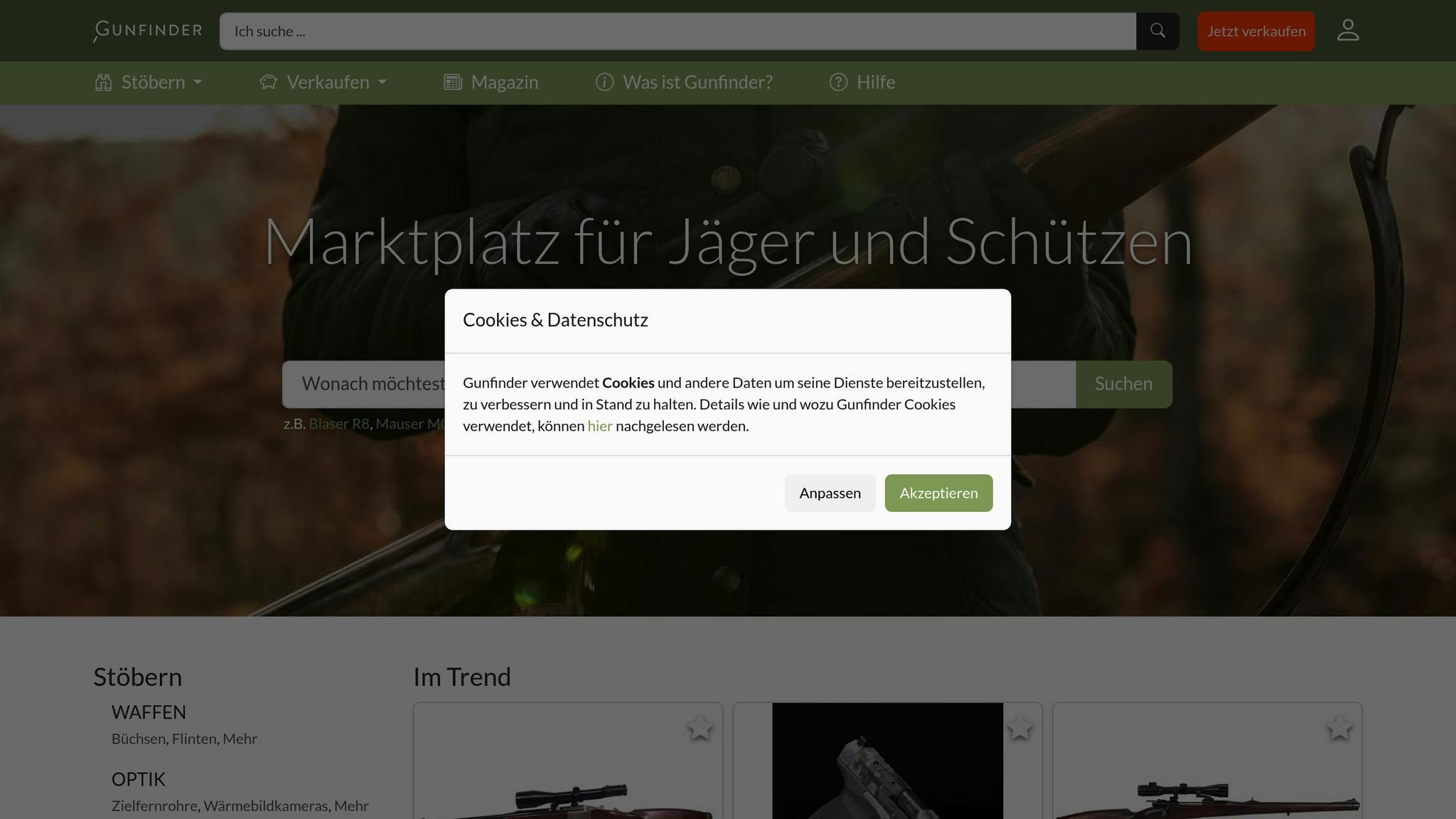
Gunfinder is an online platform specifically designed for hunters and shooters. Here you can choose from a variety of riflescopes and Red Dot Sights. The platform allows you to compare products, brands, and retailers. You can browse both new and used optics.
Gunfinder also offers you a convenient shopping service with secure transactions and free shipping. In the Gunfinder Magazine, you will find helpful articles and tips related to hunting equipment. Thanks to the search function that scans multiple platforms simultaneously, you get a comprehensive market overview – whether you need a compact Red Dot Sight for close range or a high-quality riflescope for long distances.
Conclusion
Whether you choose a Red Dot Sight or a Standard Optic depends entirely on your individual requirements – both systems have their own advantages.
Red Dot Sights impress with their fast target acquisition and ease of use. Thanks to the parallax-free design and the ability to aim with both eyes open, they are ideal for moving targets and close range up to about 50 meters. They are robust, allow for flexible eye relief, and are excellent for dynamic situations such as driven hunts. With prices ranging from 100–800 €, they are often cheaper than high-quality riflescopes.
Standard Optics, on the other hand, shine in precision at greater distances. Their magnification and various reticle options enable accurate target recognition and precise hits. At 300 meters, riflescopes achieve a hit rate of about 95%, while Red Dot Sights only reach around 70% here. Therefore, they are the better choice for long-range shots over 200 meters, even though they are significantly more expensive, with prices ranging from 500–2,000 € or more.
Ultimately, the decision depends on which shooting scenarios you prefer – distance, reaction time, and the respective environmental conditions play a significant role. Many shooters today use a combination of Red Dot Sights and magnifiers to remain flexible.
On Gunfinder, you can discover a wide selection of both optic types, compare prices, and read reviews. The platform helps you find the right optic for your needs – whether you prefer fast target acquisition or precise shots at long distances.
FAQs
What should I consider when choosing between a Red Dot Sight and a Standard Optic?
Red Dot Sight or Standard Optic: Which is Better for You?
The decision between a Red Dot Sight and a Standard Optic strongly depends on your planned application area and personal preferences.
A Red Dot Sight is ideal when quick target acquisition is essential – especially at short to medium distances. These optics are easy to use and excel in dynamic situations, such as driven hunts, where speed and overview are required.
Standard Optics, such as riflescopes, score with precision at greater distances. However, they often require more practice and are generally associated with higher acquisition costs.
Before making your decision, you should also consider your budget, the mounting options of your weapon, and the requirements you have for the optic. Ultimately, your intended use should always play the most important role.
How does the parallax-free feature of Red Dot Sights improve aiming accuracy?
Parallax-Free Feature in Red Dot Sights
Red Dot Sights are designed so that the red dot always points exactly at the target – regardless of the angle from which you look through the optic. Your head or eye position does not matter. The result? Precision is maintained, making these aiming optics particularly easy to handle. They are excellent for quick target acquisition, especially in dynamic and challenging situations.
Why is magnification important in Standard Optics for precise shooting at long distances?
The Importance of Magnification in Standard Optics
Magnification is a crucial factor when it comes to precise shooting at long distances. With higher magnification, you can see your target more clearly and perceive even the smallest details. This makes it significantly easier to aim at and hit distant or small targets accurately.
But caution: The choice of the right magnification strongly depends on the intended use. Too high a magnification can severely restrict the field of view, making target acquisition more difficult. For most situations, a moderate magnification is recommended, as it provides a good balance between precision and overview.



